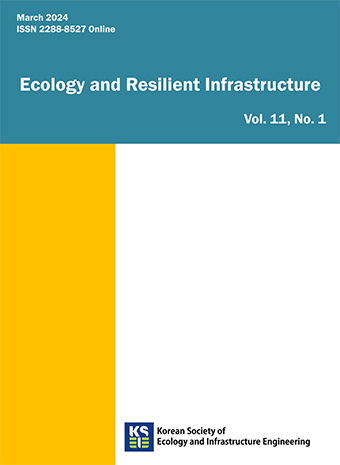Review Article
Abstract
References
Information
The Ministry of Land & Environment Protection (MLEP), Ministry of Forestry (MOF), Ministry of Fisheries (MOF), Ministry of Agriculture (MOA) and Ministry of Public Health (MOPH). 2014. The 5th National Report on Biodiversity of DPR Korea. https://www.cbd.int/doc/ world/kp/kp-nr-05-en.pdf. Assessed 10 March 2019.
- Publisher :Korean Society of Ecology and Infrastructure Engineering
- Publisher(Ko) :응용생태공학회
- Journal Title :Ecology and Resilient Infrastructure
- Journal Title(Ko) :응용생태공학회 논문집
- Volume : 6
- No :1
- Pages :49-57
- Received Date : 2019-03-12
- Revised Date : 2019-03-18
- Accepted Date : 2019-03-18
- DOI :https://doi.org/10.17820/eri.2019.6.1.049




 Ecology and Resilient Infrastructure
Ecology and Resilient Infrastructure







